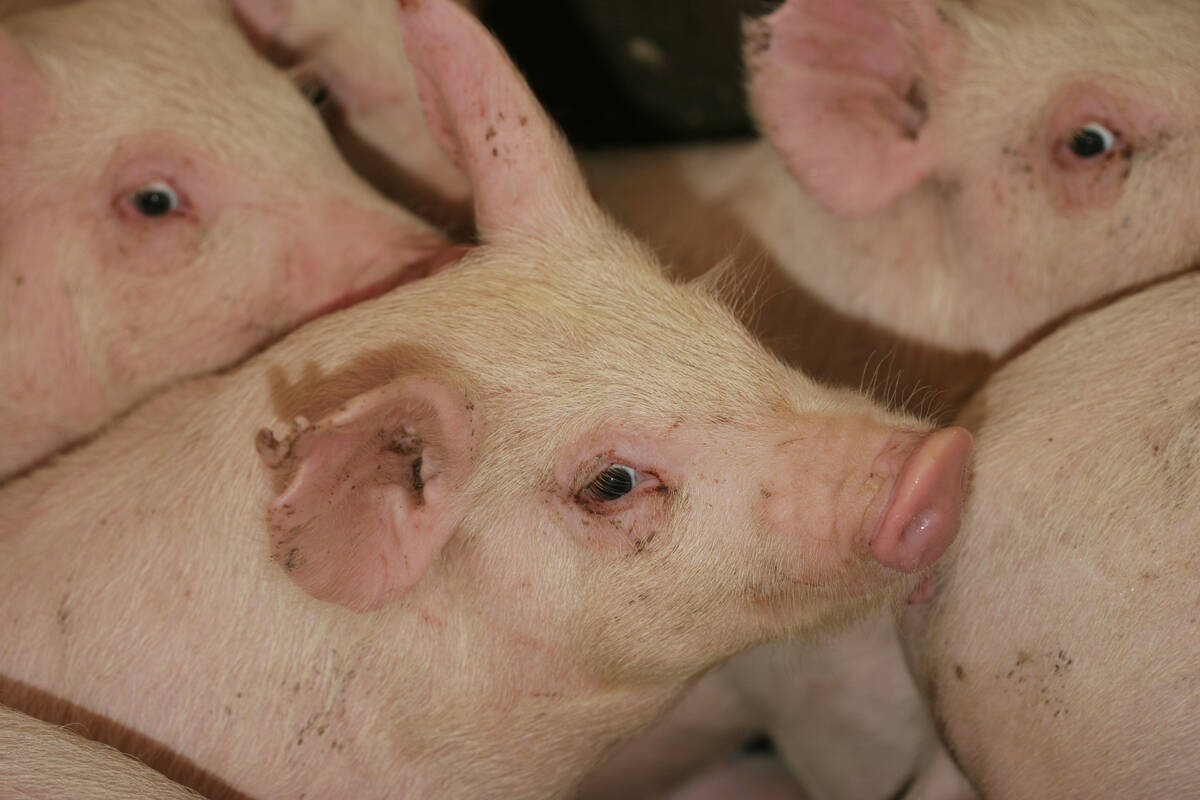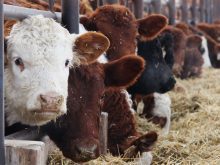The tragedy of foot-and-mouth disease still reverberates in Great Britain, seven years after it devastated the country’s livestock industry.
Farm neighbours still don’t speak to each other and export markets remain in recovery mode.
Farmers and officials thought they knew how to deal with serious contagions after dealing with BSE in the 1990s, but the food-and-mouth outbreak of 2001 exposed cracks in the system, Charles Milne, Scotland’s chief veterinary officer, told Alberta Pork’s annual meeting in Calgary Dec. 11.
“It illustrates no matter how careful you are, the unexpected always catches you out.”
Read Also

The Western Producer Livestock Report – September 25, 2025
The U.S. national live price average for barrows and gilts was $81.21 Sept. 17. It was $78.37 Sept. 9. U.S. hogs averaged $106.71 on a carcass basis Sept. 17, up from $106.10 Sept. 9.
A second outbreak in the fall of 2007 occurred when sewage containing the pathogen leaked from a laboratory. Nearly 1,600 animals were destroyed in a 50 kilometre radius of the lab. New measures implemented after 2001 were credited with quick containment.
A major change stemming from the first outbreak was the government decision to merge its farming and food ministries into the ministry of environment, food and rural affairs.
“Government is now walking away from agriculture,” he said.
The original case was found at an abattoir in Essex, where a vesicular disease in pigs was reported Feb. 20, 2001. About 600 farms had supplied pigs to the facility in the previous two weeks, including one that used swill, or unprocessed restaurant waste.
About 90 percent of the 540 pigs on that farm were infected, which the owner never reported.
Weather conditions were ideal for airborne spread and the pathogen moved like a plume to a sheep farm, which sent 16 animals to market. By Feb. 23, 200 farms were infected in 12 locations. The disease appeared in southwestern Scotland by March 1, and the last confirmed case was found Sept. 30.
“If one man had reported disease, which he hadn’t done, and if those 16 sheep had not gone to market, but they did, it would not have happened,” Milne said.
“No amount of contingency planning will prepare you for that.”
Officials were dealing with 57 outbreaks a day and conducted 3,000 tracings of livestock dealers.
Farms were quarantined and a three km radius was set up around infected premises. An experience from Uruguay told officials that they had a better chance of controlling the disease if they could slaughter livestock within 24 hours.
At the end of the outbreak it was estimated nearly 120,000 animals were infected but close to one million animals were killed as part of a welfare scheme because there was no market for them.
The epidemic resulted in loss of genetic stocks and rare breeds were at risk of being eradicated. Export markets were lost and some have just recently been regained.
Vaccination was offered, but retailers said they would not sell meat from vaccinated animals.
Dead animal disposal was also a problem. On-farm burial was allowed for a short time, but eventually incineration was the only choice. Great Britain did not have the rendering capacity to handle the carcasses.
Rural communities also experienced major financial hardships and psychological damage, but the burden wasn’t shared equally.
Farmers in restricted zones who could not move their animals were hit harder financially and received no compensation for the costs of feeding and keeping overweight animals. Farmers with animals that were slaughtered were compensated. As a result, cases have been reported where neighbours no longer speak to each other.
Tourism was also hard hit because traditional access to rural areas was closed. Once the outbreak was over, it was difficult to reopen rural footpaths because farmers didn’t want public access to their land. If a future situation occurs, the countryside will not be closed.
“We lost four billion pounds because it was shut to all visitors,” Milne said.
A number of recommendations and new regulations were implemented after 2001.
International and local surveillance has been stepped up and more inspections are conducted at customs and ports of entry because it was found people still try to sneak in wild meat and other banned products.
A national strategy for animal health and welfare was introduced that included a new biosecurity code that applies to farmers. The use of swill as livestock feed is banned.
Traceability has been enhanced so that all livestock producers and animals must now be registered.
A strategy to eradicate endemic diseases such as tuberculosis and reduce avoidable conditions such as lameness was introduced. Twelve diseases are listed for reduction including scrapie, sheep scab and footrot.
Farmers are paid to work with their veterinarians to develop health plans. Vets monitor pigs at abattoirs and the information is returned to farms so improvements can be made. The government is also looking at more effective ways to mark pigs and record all movement.
Electronic identification is coming for sheep.
Cattle must wear two ear tags. Dairy cattle must be registered within 36 hours of birth and beef cattle within 20 days. All movements are recorded by sellers and buyers within three days.
Vaccine banks have been set up, and the government has 50 vaccination teams in place that can react immediately in the event of an outbreak. Contracts have been signed with truckers and renderers so they can provide services when needed.
Nevertheless, the best contingency plans are tested during a disease outbreak.
“You will never get everything in place, but it is important to know where the additional resources will come from,” Milne said.
During an epidemic, a battle plan is needed to set the day’s agenda so people in the field and government are connected and work together.
An advance website has been prepared that can be activated during an outbreak with full information on the disease and steps to control it.
New technology is also being tested so diagnostics can be sped up.















